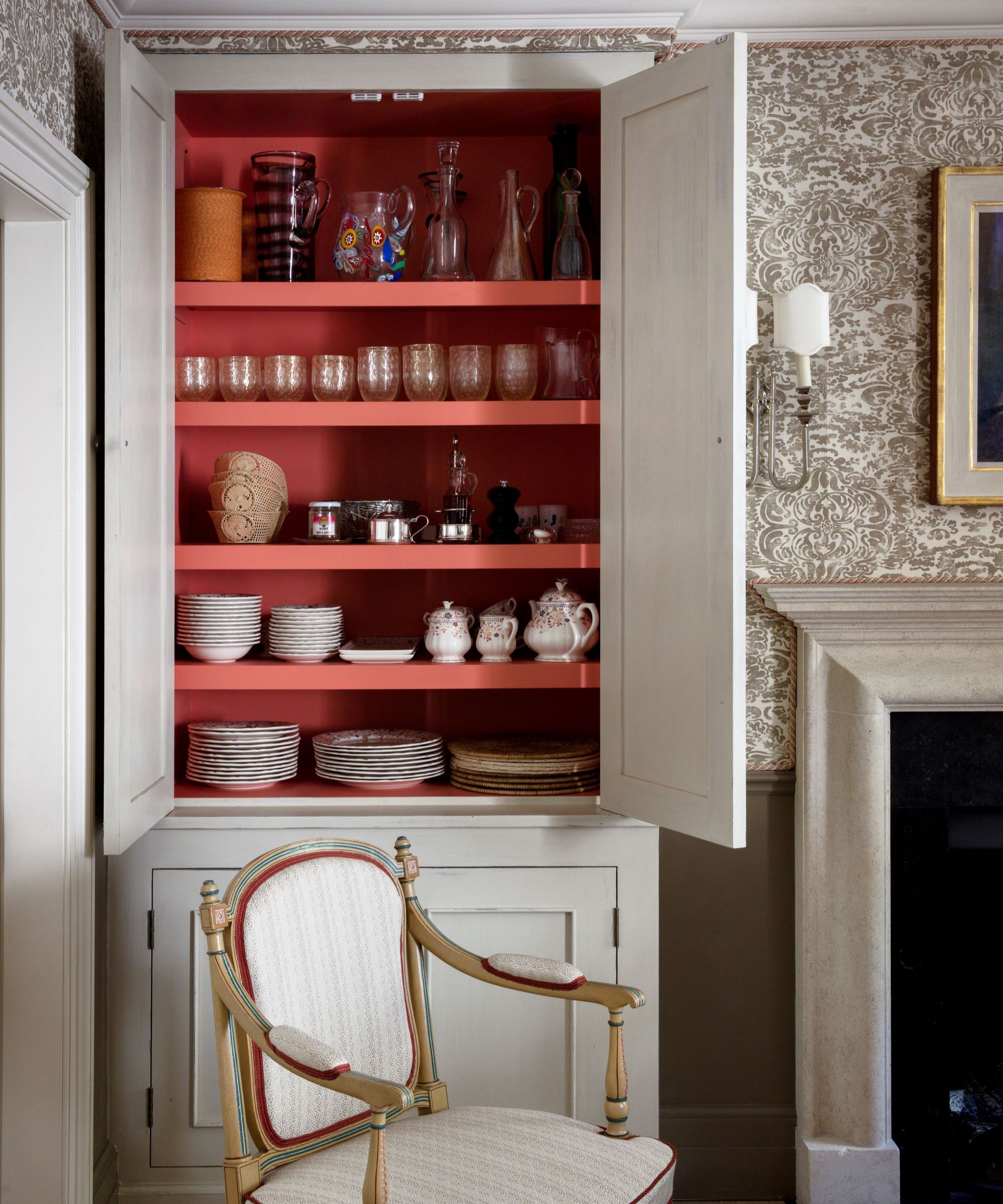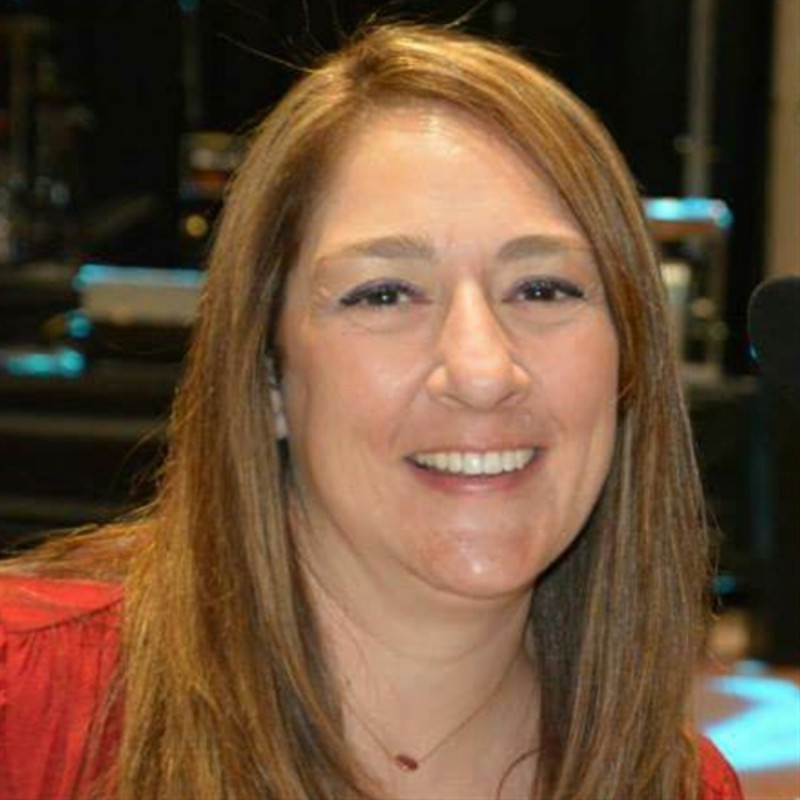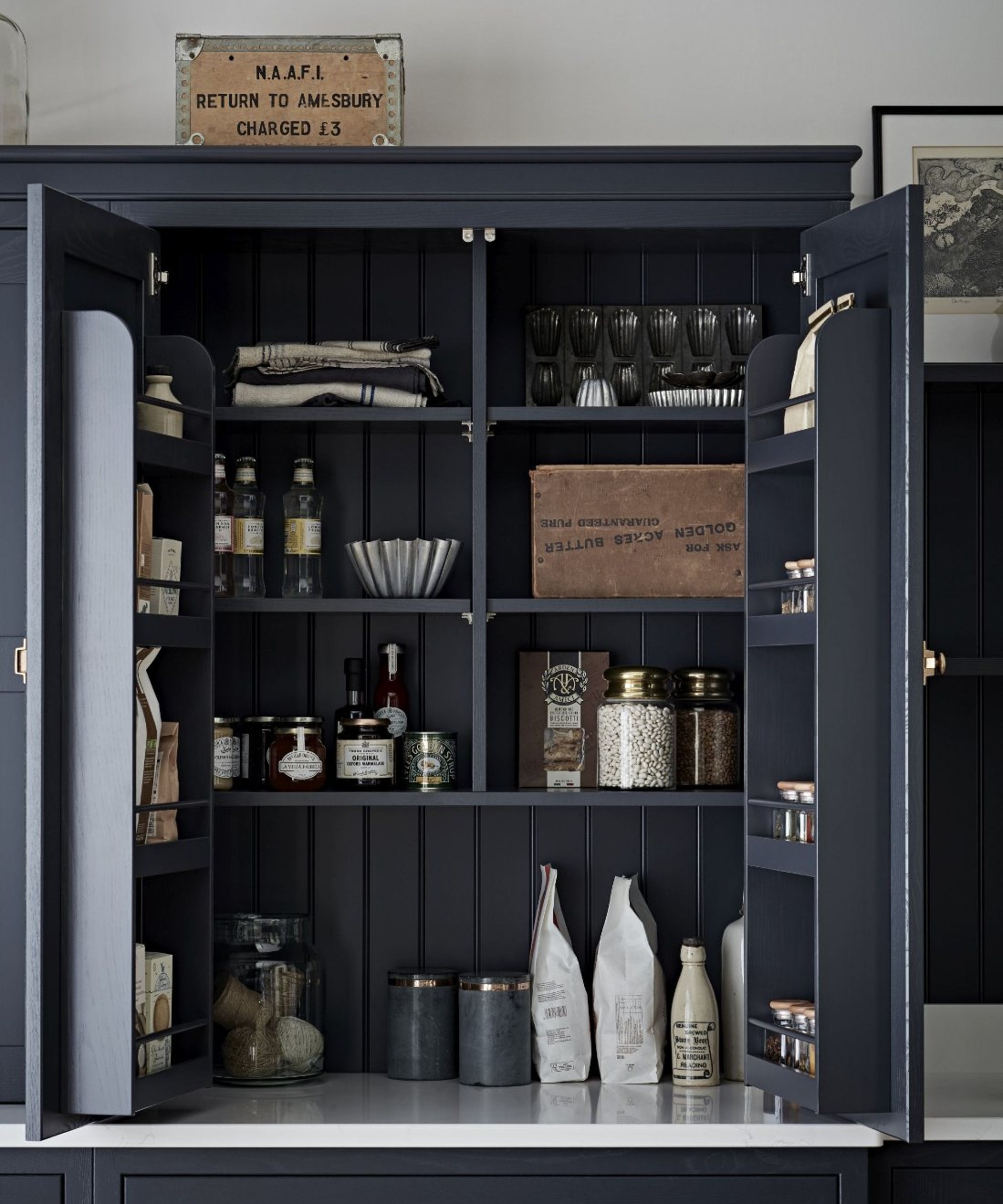
High kitchen cabinets are a vital storage drop-zone for most of us, but they can undeniably be an awkward spot to arrange, given that they aren’t as easily accessible or even that easy to see into.
So what should you put in high kitchen cabinets when organizing a kitchen? The answers will vary depending on your home and who you live with. But if you’re looking for some inspiration on the best use of this space, the key thing to remember is that these spots should be reserved for things you use on a less frequent basis or that you might struggle to pull out from a height.
We asked kitchen design experts and professional home organizers to share their top tips for what to put in high kitchen cabinets. This is what they said.
What to put in high kitchen cabinets
'Ideally, your upper cabinets are for storing items used less than once a month,' says Mary Jo Contello, owner and organizer at Organized by MJ. This might be fragile glassware reserved for special occasions, seasonal decor that comes out of hiding once a year, or large-yet-lightweight appliances that take up too much space elsewhere in your kitchen.
1. Fragile glasses and cups

Generally, the higher you place something in your kitchen, the less likely it is to be bashed about from daily use or grabbed by little hands exploring. Because of this, high kitchen cabinets can be a great place to put more delicate items you want to keep as protected as possible.
'Glasses/cups are better in high cabinets,' says Mary Jo Contello. 'However, these are items that are typically used daily, so you want them in an upper cabinet you can easily reach.'
Interior designer Remya Warrior agrees, adding: 'Extra glassware you don't use very often, such as crystalware or specialist cocktail glasses, should also be stored in upper cabinets.'
Design expertise in your inbox – from inspiring decorating ideas and beautiful celebrity homes to practical gardening advice and shopping round-ups.
However, when placing glasses or cups in a high spot, make sure you can still see the glass you’re reaching for to avoid clanging these items together each time you pour yourself a drink. You might, for example, want to use organizers like these under-shelf wine glass holders from Amazon. They sit at the top of your kitchen cabinets and allow your glasses to hang upside down, making them easy to see and access.

Mary Jo Contello spent years in the corporate world, when downsizing and layoffs left her with a sudden need for a new direction in life. Passionate about organizing, she started Organized by MJ with the goal of cleaning and organizing people’s spaces in Houston, TX and the surrounding communities. MJ is also a member of the National Association of Productivity and Organizing (NAPO).
2. Seasonal items

A high kitchen cabinet is also a great place to store seasonal items that you don’t need to reach for regularly or might hold sentimental value. Mary Jo suggests putting 'breakable holiday decor in high kitchen cabinets, along with vases that are only used during the holidays.'
And it needn’t be only Christmas or Thanksgiving items that you stash in higher-up kitchen cabinets. Meredith Goforth, professional organizer and founder of House of Prim, says: 'I like to fill these spaces with occasional items like birthday celebration supplies, seasonal entertainment items, and things like tablecloths, napkins and napkin rings, and more.' Consider the items you generally need on a yearly basis rather than daily or even weekly.

With an innate passion for organizing, schedules, and style, Meredith Goforth began her career as a Bookings Editor for magazines, before deciding that the only way to stay sane(ish) was to invest in the organization of her family and home, after welcoming three boys and moving six times in five years. Her company, House of Prim, sets up organization systems to restore order in the home in the most stylish way possible.
3. Large items you use when you have guests

You likely have many items in your kitchen that you only bring out whenever you have guests or when you host a cocktail party. If so, storing these items in your upper kitchen cabinets is usually a great option, given that they are used much less often compared to other kitchen essentials.
'The top shelf can be a great place to store serving dishes, drink pitchers, large bowls, and platters,' says Meredith. 'But I always warn against stacking these. Entertainment dishes and platters can become very heavy when stacked, making the bottom of the pile inaccessible. The last thing you want to deal with when getting ready to entertain is having to take out every single serving dish you own in order to get to the one you are looking for.'
As such, proper organization is key. If you plan to store platters or dishware high up, try storing them vertically or in small stacks by adding additional levels to your shelf.
Similarly, if you only tend to bring out certain bottles of alcohol when you have company, it may also be sensible to store these in high kitchen cabinets. Portable wine racks are another great option if you're unsure how to store wine or spirits in cabinets.
4. Smaller appliances that you use less often

It can be a fantastic use of space to store lesser-used appliances in high kitchen cabinets, but it’s important to consider how easy getting them down is going to be. Remember, heavy items are not gravity's friend.
'When it comes to deciding what to store in high kitchen cabinets, there are two main factors to consider: frequency of use and weight. The sweet spot is infrequently used and light,' says Meredith Goforth.
Mary Jo agrees: 'A good example of an item you might not use a lot is a Kitchenaid stand mixer. But this is heavy, so you shouldn't put it high in the kitchen.'
Use your upper kitchen cabinets as a space to store lighter appliances only – such as sandwich presses, irons, small coffee makers, or your blender. Items like these are likely to be much easier to haul out of a cupboard and usually don’t need to be in a prime spot in your kitchen, given how often (or not) they are used.
5. Extra cookware

'Most of us have our go-to items of cookware that we use on a regular basis,' says Remya Warrior. 'Any items of cookware that you use infrequently, like extra pans, baking trays, or baking dishes, can be stored above in order to free space in the lower cabinets.'
Your high cabinets are a great place to pop these overspill items, as they likely won’t be too heavy to pull down if needed. Similarly, cabinets can also be an ideal area to organize your cookbooks, many of which aren’t used on a daily basis. These are incredibly easy to organize in an upper cabinet; simply stack them next to one another, leaned up against the side of the cabinet, with their spines showing – so that you can easily pull out the one you want.
Of course, cookbooks and decorative kitchenware can look equally good when showcased on kitchen shelving. So, if you're wondering whether or not to ditch your kitchen wall cabinets altogether, this could be an idea worth exploring.
FAQs

What to put in the space between your high kitchen cabinets and the ceiling
If your high kitchen cabinets don’t extend to the full height of the room, many of us will have a clear space between the top of said cabinets and the ceiling. So is it a good idea to use this spot as an extra storage space?
'Personally, I prefer to avoid overhead clutter above the cabinets,' says Meredith Goforth, professional home organizer. 'Considering the space is even more difficult to access, it isn’t usually worth the risk of creating an overwhelming atmosphere in the kitchen.'
If you don’t like this spot looking empty, you could always look for ways to decorate above kitchen cabinets. Add a piece of artwork or a large ornament. But again, always be wary of overcrowding this small – and often dark – area.
How to organize high kitchen cabinets
High kitchen cabinets can be difficult to see into, which is why it is essential to organize your kitchen cabinets so that everything in them is within easy reach.
'The main goal is to keep all items visible to the eye and as easily accessible as possible despite more infrequent use,' says Meredith Goforth. 'For dishware, adding additional levels within your cabinet can be transformative. For trays or platters, consider aligning them vertically using a vertical rack instead of stacking.' Labels and clear storage bins from Amazon can also be ideal for making items more easily identifiable and easier to pull out.
How can you adapt high cabinets for elderly or mobility-impaired individuals?
Not everyone has an easy time accessing the highest shelves in the kitchen. To tailor your cabinets to elderly or mobility-impaired individuals, consider the following ideas:
1. Pull-down shelves & Lazy Susans: Install pull-down shelving mechanisms that bring high shelf contents down to a more accessible level or incorporate a Lazy Susan for kitchen cabinets to reduce the need to reach far back.
2. Use lightweight containers: Store items in lightweight containers to make them easier to handle when reaching or lifting. The last thing you want is for a heavy container to come crashing down when an elderly relative is reaching for it.
3. Clear and large labeling: Anyone who is visually impaired will know that reading tiny labels from a distance is practically impossible. So label items clearly and in large print to make it easier to identify contents without having to reach up or move items around.
4. Introduce lights
To see the contents of a deep cabinet, consider installing lighting to improve visibility. When designing a kitchen, you should factor this into your kitchen lighting plans; however, you can also purchase motion sensor strip lights – such as these LED cabinet lights from Wayfair – that are easy to install on a DIY basis.
How can you safely access high kitchen cabinets?
If you can’t quite reach those high spaces, keep a sturdy stepping stool or a kitchen-safe folding ladder nearby. Before you climb, double-check it’s nice and stable on the floor (this can be tricky on uneven tiles)
Topsham 2-Step Manufactured Wood Step Stool
Was $195 | Now $67.99 at Wayfair
This practical stepping stool would suit a range of aesthetics thanks to its simple but attractive two-step design.
Ask yourself three simple questions when storing items in high cabinets: How often do I use it? How heavy is it? How easy is it to pull down?

Gabriella is a freelance contributor for Homes & Gardens. She is a DIY enthusiast and a lover of all things interior design, often found antiquing or browsing the aisles of her local hardware store. She has a particular passion for historic buildings and is in the process of renovating a Victorian coachhouse in the countryside.
For much of the past decade, Gabriella has worked as a freelance writer, crafting copy for national publications and renowned homeware brands. Most recently, she worked for Homebuilding & Renovating Magazine and is the former Head of Solved at Homes & Gardens, focusing on case studies for the magazine and website, as well as writing features about issues surrounding historic and listed building projects.
- Amy HuntContributing Editor




